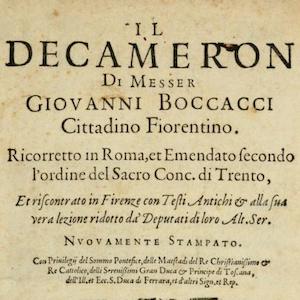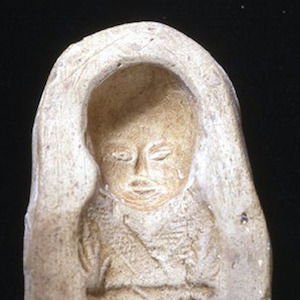Post-Classical (500 CE - 1450 CE)

Decameron
Giovanni Boccaccio provided the most famous description of what happened during the Black Death in Italy.

Three-Character Classic
The famous Three-Character Classic, a children's primer attributed to Wang Yin-lin (1223-1296) whose text consists of rhymed verse developed to help children increase their vocabulary in Chinese characters, provides a valuable introduction to the social values that children were encouraged to emb

Illustration from The Maqamat of al-Hariri
During the Abassid period and onward, children four or older in villages and urban centers began attending schools (maktabs) attached to mosques to obtain a basic education in religious matters.

Devshirme System
This Ottoman miniature painting from 1558 shows a group of boys dressed in red, being registered for the devshirme (usually translated as “child levy” or “blood tax”).

Aztec Cradleboard Figurine and Drawing
The ceramic figurine of an infant in a cradle (also called a cradleboard) was created by the Nahua, or Aztec people of Mexico, between 1350 and 1521 CE.

Linen Towel with Indigo Woven Border
Italian noblewomen presented soft, absorbent, linen towels with indigo woven borders to birthing mothers during the 14th century and later.

Earthenware Mold of a Swaddled Child
The earthenware mold for casting a figurine of an infant was found in Tangyangu China, and is likely dated to between 960 and 1279 CE, during the Song dynasty. The mold measures 3.2 inches long, and belongs to a collection of molds depicting men, women, and animals.

Ayyubid and Ottoman Architecture
In the Islamic world, women were able to own and control their own property at a time when Christian women in Europe were unable to do so. Many wealthy women endowed public buildings as a mark of their piety.

Lady of the Bridge, Tale of Genji Painting Scroll
The greatest work produced during the Heian era was The Tale of Genji by Murasaki Shikibu, lady-in-waiting to Empress Akiko. Considered the world’s first novel, Genji is written as an absorbing portrait of Heian court life, the splendor of its rituals, and aesthetic culture.

Bamboo River II, Tale of Genji Painting Scroll
The greatest work produced during the Heian era was The Tale of Genji by Murasaki Shikibu, lady-in-waiting to Empress Akiko. Considered the world’s first novel, Genji is written as an absorbing portrait of Heian court life, the splendor of its rituals, and aesthetic culture.